Home>Articles>Which Type Of Pillowcase Is Best For Acne-prone Skin?


Articles
Which Type Of Pillowcase Is Best For Acne-prone Skin?
Modified: February 18, 2024
Discover the best pillowcase for acne-prone skin in this informative article. Find out which type of pillowcase is most beneficial for preventing breakouts and promoting clearer skin.
(Many of the links in this article redirect to a specific reviewed product. Your purchase of these products through affiliate links helps to generate commission for Storables.com, at no extra cost. Learn more)
Introduction
Acne is a common skin concern that affects millions of people around the world. While there are various factors that contribute to the development of acne, one often overlooked culprit could be your pillowcase. Yes, you read that right! The type of material your pillowcase is made of can have a significant impact on your skin, especially if you have acne-prone skin.
When we sleep, our faces come into direct contact with our pillowcases for several hours every night. This prolonged exposure can lead to the transfer of oils, dirt, bacteria, and sweat from the pillowcase to our skin, potentially exacerbating existing acne or causing new breakouts to occur.
Therefore, choosing the right pillowcase that can help reduce acne flare-ups is crucial. In this article, we will explore the different types of pillowcase materials, their pros and cons, and factors to consider when selecting the best pillowcase for acne-prone skin.
Key Takeaways:
- The right pillowcase can significantly impact acne-prone skin by minimizing the transfer of oils, dirt, and bacteria. Materials like cotton, silk, satin, and bamboo offer unique benefits, but proper care is essential for maintaining a clean sleeping environment.
- Regular washing, hypoallergenic materials, and breathable fabrics are crucial considerations when choosing a pillowcase for acne-prone skin. Experimenting with different materials and implementing good skincare habits can help individuals find the ideal pillowcase for healthier, clearer skin.
Read also: 11 Best Skin Steamer for 2024
Understanding Acne and Its Causes
Before diving into the connection between pillowcases and acne, let’s first understand what acne is and what causes it. Acne is a skin condition that occurs when hair follicles become clogged with oil, dead skin cells, and bacteria. This can lead to the formation of pimples, blackheads, whiteheads, and in severe cases, cysts or nodules.
The exact cause of acne is multifactorial and can vary from person to person. Hormonal changes, particularly during puberty, can increase the production of sebum, an oily substance that can contribute to clogged pores. Genetics also play a role, as some individuals may be more predisposed to developing acne. Other factors such as stress, diet, and certain medications can also influence the occurrence and severity of acne.
While pillowcases may not be the primary cause of acne, they can undoubtedly contribute to its persistence or worsening. When we sleep, our faces come into contact with the surface of our pillowcases, which may contain oils, sweat, dirt, and bacteria from our hair and skin. If these substances are not promptly removed, they can accumulate on the pillowcase and potentially transfer back onto our skin, clogging pores and triggering acne breakouts.
It is important to note that pillowcases are not the sole cause of acne. Proper skincare, including cleansing and moisturizing the face, along with a healthy lifestyle and a good skincare routine, are essential to managing acne. However, choosing the right pillowcase material can be an additional proactive step in preventing and minimizing acne breakouts.
The Link Between Pillowcases and Acne
The connection between pillowcases and acne lies in the potential transfer of oils, dirt, and bacteria from the pillowcase to the skin. When we sleep, our faces come into direct contact with the pillowcase, and any substances present on the fabric can be transferred onto our skin. This can clog pores, leading to inflammation and the development of acne.
Pillowcases can harbor an array of impurities, including sebum, sweat, dead skin cells, and even remnants of skincare products or hair products. These substances can accumulate on the surface of the pillowcase over time, creating an environment that is less than ideal for acne-prone skin.
Furthermore, pillowcases can also harbor bacteria and allergens. Our faces are exposed to various environmental factors throughout the day, and when we rest our heads on the pillowcase, these microorganisms can be transferred onto the fabric. If not washed regularly, these bacteria can thrive on the pillowcase and potentially aggravate acne-prone skin.
Another factor to consider is the friction between the pillowcase and the skin. Rough or abrasive fabrics can cause irritation and inflammation, which can worsen existing acne or trigger new breakouts.
Therefore, by choosing the right pillowcase material and regularly washing it, we can minimize the risk of introducing impurities, bacteria, and friction onto our skin while we sleep. This, in turn, can help reduce acne breakouts and support overall skin health.
Factors to Consider When Choosing a Pillowcase for Acne-prone Skin
When selecting a pillowcase for acne-prone skin, there are several important factors to consider. These factors can help determine which material is most suitable for your skin type and contribute to reducing acne breakouts:
- Material: The choice of material for your pillowcase is crucial. Opt for fabrics that are gentle on the skin and hypoallergenic. Look for natural fibers such as cotton, silk, or bamboo, which are breathable and less likely to irritate the skin.
- Weave: The weave of the fabric can affect its texture and feel. Look for pillowcases with a tight weave, as this can help prevent bacteria and impurities from penetrating the fabric and coming into contact with your skin.
- Absorbency: Consider the absorbency of the fabric. If you have oily or combination skin, a pillowcase with good absorbency can help draw excess oil away from your skin, reducing the risk of clogged pores and acne breakouts.
- Hypoallergenic: If you have sensitive skin, choosing a hypoallergenic pillowcase can help minimize irritation and allergic reactions. Hypoallergenic fabrics are less likely to contain irritants or allergens that could trigger acne or other skin issues.
- Durability: Look for pillowcases that are durable and can withstand regular washing. Regular laundering is important for maintaining a clean and hygienic sleeping environment, which can help prevent acne flare-ups.
- Color: While it may not directly affect acne, choosing a lighter-colored pillowcase can make it easier to spot and remove any impurities that may have transferred from your skin or hair to the fabric.
Considering these factors can help you make an informed decision when choosing a pillowcase that is best suited for your acne-prone skin. Experimenting with different materials and observing how your skin responds can also help you find the ideal pillowcase that promotes healthier and clearer skin.
Cotton Pillowcases: Pros and Cons
Cotton is a popular choice for pillowcases due to its soft and breathable nature. When it comes to acne-prone skin, cotton pillowcases have both pros and cons that should be considered:
Read also: 11 Incredible Acne Pillowcase for 2024
Pros
- Soft and Comfortable: Cotton pillowcases are known for their softness, providing a comfortable surface to rest your face on while you sleep.
- Breathable: Cotton is a natural fiber that allows for better airflow, keeping your skin cool and reducing the likelihood of sweat buildup, which can contribute to acne breakouts.
- Hypoallergenic: Cotton is typically hypoallergenic, making it suitable for those with sensitive skin. It is less likely to cause irritation or allergic reactions that can trigger acne flare-ups.
- Absorbent: Cotton pillowcases have good absorbency, which can help draw excess oil and sweat away from your skin, preventing them from clogging your pores.
Cons
- Potential for Irritation: While cotton is generally gentle on the skin, it can still cause some friction and irritation for certain individuals, especially if the fabric is of lower quality or has a rough texture.
- Retention of Oil and Dirt: Cotton pillowcases have a tendency to absorb oil, dirt, and other impurities. If not washed regularly, these substances can build up on the fabric and transfer back onto your skin, potentially worsening acne.
- Wrinkling: Cotton is prone to wrinkling, which may not affect its functionality but can impact the aesthetic appearance of your pillowcase.
- Regular Washing Required: To maintain a clean sleeping environment and prevent the accumulation of oils and dirt, cotton pillowcases should be washed on a regular basis.
Overall, cotton pillowcases can be a good choice for acne-prone skin due to their softness, breathability, and hypoallergenic properties. However, it is important to ensure that they are frequently washed and properly cared for to minimize the risk of oil and dirt buildup.
Silk Pillowcases: Pros and Cons
Silk pillowcases have gained popularity in recent years for their luxurious feel and potential benefits for the skin and hair. When it comes to acne-prone skin, silk pillowcases have several pros and cons to consider:
Read also: 11 Incredible Acne Pillowcase for 2024
Pros
- Gentle on the Skin: Silk is known for its smooth and slippery texture, which can reduce friction and irritation on the skin. This can be beneficial for individuals with acne-prone or sensitive skin, as it minimizes the risk of aggravating existing breakouts.
- Less Absorbent: Silk pillowcases are less absorbent than other materials, such as cotton. This means they are less likely to draw out moisture from your skin or hair, helping to maintain hydration levels and prevent excessive drying.
- Reduces Friction: Silk’s smooth surface can reduce friction between your face and the pillowcase, preventing the pulling and tugging that can contribute to skin irritation and inflammation.
- Regulates Temperature: Silk has natural temperature-regulating properties, keeping your skin cool in warm weather and warm in cooler temperatures. This can help reduce sweat production and the potential for acne breakouts.
- Hypoallergenic: Silk is hypoallergenic and less likely to cause allergic reactions or skin irritations, making it suitable for individuals with sensitive skin or allergies.
Cons
- Price: Silk pillowcases tend to be more expensive compared to other materials. The higher cost may be a consideration for those on a budget.
- Susceptible to Snags or Pulls: Silk is a delicate fabric that can be prone to snags or pulls. Care should be taken when handling and washing silk pillowcases to avoid damaging the fabric.
- Regular Washing Required: Silk pillowcases should be hand-washed or washed on a delicate cycle to maintain their integrity. This requires more care and effort compared to other pillowcase materials.
- Less Absorbent: While less absorbency can be beneficial for maintaining skin hydration, it may not be suitable for individuals with excessively oily skin, as silk pillowcases may not adequately absorb excess oil.
Silk pillowcases offer a luxurious and gentle option for those with acne-prone skin. They can help reduce friction, minimize irritation, and regulate temperature. However, their higher cost and delicate nature require careful handling and regular washing to maintain their benefits and extend their lifespan.
Satin Pillowcases: Pros and Cons
Satin pillowcases are known for their smooth and silky texture, similar to silk, but they are made from synthetic materials like polyester or nylon. When considering satin pillowcases for acne-prone skin, it is important to weigh their pros and cons:
Read also: 11 Incredible Acne Pillowcase for 2024
Pros
- Smooth and Gentle: Satin pillowcases have a smooth and slippery surface that can reduce friction on the skin. This can be beneficial for individuals with acne-prone or sensitive skin, as it minimizes irritation and the potential for aggravating breakouts.
- Affordability: Satin pillowcases are often more affordable compared to silk, making them a budget-friendly option for those looking for a luxurious feel without breaking the bank.
- Durability: Satin pillowcases are generally more durable than silk or delicate fabrics. They are less prone to snags or pulls, making them a practical choice for everyday use and regular washing.
- Low Maintenance: Satin pillowcases are relatively easy to care for. They can usually be machine-washed and dried without special instructions, making them convenient for busy lifestyles.
Cons
- Less Breathable: Satin pillowcases are not as breathable as natural fabrics like cotton or silk. This may lead to a buildup of heat and moisture, potentially increasing the risk of acne breakouts for individuals prone to sweating during sleep.
- Less Absorbent: Satin pillowcases do not absorb moisture as effectively as cotton or silk. This may be a disadvantage for those with oily skin, as excess oil may not be sufficiently absorbed by the pillowcase, potentially contributing to clogged pores and acne flare-ups.
- Static and Frizz: Satin pillowcases can generate more static electricity compared to silk, which may result in increased frizz and static in the hair. This can be a concern for individuals with curly or frizzy hair.
- Potential for Synthetic Materials: Satin pillowcases are typically made from synthetic materials like polyester or nylon. Some people may be sensitive or allergic to these fabrics, leading to skin irritation or allergic reactions.
Satin pillowcases offer a smooth and affordable option for those seeking a luxurious feel. They are durable, low maintenance, and can reduce friction on the skin. However, their breathability, absorbency, and potential for static electricity should be considered when choosing a pillowcase for acne-prone skin.
Bamboo Pillowcases: Pros and Cons
Bamboo pillowcases are becoming increasingly popular due to their eco-friendly and sustainable nature. They are made from bamboo-derived materials, such as bamboo rayon or bamboo lyocell. When considering bamboo pillowcases for acne-prone skin, it’s important to weigh their pros and cons:
Read also: 11 Incredible Acne Pillowcase for 2024
Pros
- Soft and Smooth: Bamboo pillowcases have a soft and smooth texture, similar to silk. This can reduce friction and irritation on the skin, making them a comfortable choice for individuals with acne-prone or sensitive skin.
- Breathable: Bamboo is a highly breathable material, allowing for better airflow between the pillowcase and your skin. This can help regulate temperature and reduce sweat buildup that can contribute to acne breakouts.
- Naturally Hypoallergenic: Bamboo pillowcases have inherent hypoallergenic properties. They are resistant to dust mites, mold, and bacteria, making them suitable for individuals with allergies or sensitivities that can worsen acne.
- Moisture-Wicking: Bamboo fabric is known for its moisture-wicking properties, meaning it can effectively pull away excess sweat and moisture from your skin. This can prevent pore-clogging and minimize the risk of acne flare-ups.
- Sustainable and Eco-friendly: Bamboo is a fast-growing plant with minimal water and pesticide requirements. Choosing bamboo pillowcases contributes to sustainable practices and reduces environmental impact.
Cons
- Price: Bamboo pillowcases can be more expensive compared to other materials like cotton or synthetic fabrics. The higher cost may be a consideration for those on a budget.
- Care Instructions: Some bamboo pillowcases require special care instructions, such as delicate or gentle cycle washing. It’s important to follow the manufacturer’s recommendations to maintain their quality and integrity.
- Less Availability: Bamboo pillowcases may be less readily available compared to other types of pillowcases. This may limit color or style options depending on where you shop.
Bamboo pillowcases offer a soft, breathable, and hypoallergenic option for those with acne-prone skin. Their moisture-wicking properties and sustainable nature make them an attractive choice for promoting healthier skin while minimizing environmental impact. However, the higher cost and care requirements should be taken into consideration when choosing bamboo pillowcases.
Other Pillowcase Materials to Consider
While cotton, silk, satin, and bamboo are commonly known pillowcase materials, there are a few other options to consider for acne-prone skin. Here are a few additional materials:
Microfiber:
Microfiber pillowcases are made from finely woven synthetic fibers. They are known for their softness, durability, and affordability. Microfiber has moisture-wicking properties that help keep your skin dry and reduce the risk of clogged pores. However, some individuals may find that microfiber can be less breathable compared to natural materials. Regular washing is important to prevent the accumulation of oils and debris.
Jersey Knit:
Jersey knit pillowcases are made from a type of knitted fabric, typically cotton or a blend of cotton and synthetic fibers. They have a soft, stretchy texture similar to a t-shirt. Jersey knit pillowcases are comfortable, breathable, and can be more gentle on the skin compared to other fabrics. However, they may not offer as much slipperiness as silk or satin, which could potentially increase friction and irritation.
Flannel:
Flannel pillowcases are made from a woven fabric typically made of cotton or wool. Flannel is known for its softness and warmth, making it a cozy option for cooler climates. The soft texture of flannel can be gentle on the skin, reducing friction and irritation. However, flannel may not be as breathable as other materials, potentially trapping heat and moisture against the skin.
Linen:
Linen pillowcases are made from the fibers of the flax plant. Linen is known for its breathability and ability to wick away moisture. It is an excellent choice for hotter climates or individuals who tend to sweat during sleep. Linen is also hypoallergenic and gentle on the skin, making it suitable for acne-prone individuals. However, linen can be more prone to wrinkling and may require ironing or steaming to maintain a smooth appearance.
When considering these alternative pillowcase materials, keep in mind your personal preferences, climate, and skin sensitivities. Ultimately, choosing a fabric that is gentle on the skin, breathable, and allows for easy maintenance will help promote healthy, clear skin while you sleep.
Read more: Which Type Of Air Conditioner Is Best?
Tips for Caring for Your Pillowcase to Prevent Acne
Caring for your pillowcase properly is essential to maintain a clean and hygienic sleeping environment, which can help prevent acne breakouts. Here are some tips to follow:
1. Regularly Wash Your Pillowcase:
Wash your pillowcase at least once a week to remove any oils, dirt, sweat, and bacteria that may have accumulated. Using a gentle, fragrance-free detergent can help minimize irritation and prevent clogged pores.
2. Use a Mild, Hypoallergenic Detergent:
Choose a detergent that is free of harsh chemicals, fragrances, and dyes. These additives can potentially irritate the skin and trigger acne breakouts. Opt for hypoallergenic or sensitive skin formulations to minimize the risk of skin reactions.
3. Avoid Fabric Softeners and Dryer Sheets:
Fabric softeners and dryer sheets can leave residue on your pillowcase, which may clog pores and irritate the skin. Instead, consider using dryer balls or natural alternatives like vinegar to soften your bedding.
4. Consider Using a Pillowcase Protector:
A pillowcase protector can create an additional barrier between your skin and the pillowcase, preventing the transfer of oils and impurities. Look for protectors made from breathable materials like cotton or bamboo.
5. Avoid Sleeping with Makeup On:
Always remove your makeup before going to bed. Sleeping with makeup can clog your pores and increase the likelihood of acne breakouts. Cleanse your face thoroughly with a gentle cleanser to remove any trace of makeup.
6. Wash Your Face and Hair before Bed:
Washing your face and hair before bedtime removes any lingering oils, dirt, and hair products that can transfer onto your pillowcase. This helps minimize the buildup of impurities and reduces the risk of clogged pores.
7. Opt for Loose, Clean Hairstyles:
Consider tying your hair up in a loose bun or braid before sleeping to minimize contact between your hair and your face. Keeping your hair clean and free from excessive hair products can also reduce the transfer of oils and dirt onto your pillowcase.
Read more: Which Type Of Smoke Detector Is Best?
8. Rotate Your Pillowcase:
Having multiple pillowcases and rotating them regularly can help spread out the washing intervals. This ensures that you always have a clean surface to rest your face on while decreasing the frequency of washing each individual pillowcase.
By following these tips, you can create a healthier sleeping environment and reduce the risk of acne breakouts. Taking care of your pillowcase is an important part of maintaining clear and radiant skin.
Conclusion
Choosing the right pillowcase for acne-prone skin can make a significant difference in the health and clarity of your skin. Pillowcases can harbor oils, dirt, bacteria, and allergens that can transfer back onto your skin, potentially leading to clogged pores and acne breakouts. By considering the factors outlined in this article and selecting the appropriate pillowcase material, you can minimize the risk of these impurities coming into contact with your skin while you sleep.
Cotton pillowcases offer softness and breathability, making them a comfortable choice for acne-prone individuals. Silk pillowcases provide a gentle, luxurious option with hypoallergenic and temperature-regulating properties. Satin pillowcases offer a smooth feel at an affordable price, although they may be less breathable. Bamboo pillowcases are eco-friendly, hypoallergenic, and moisture-wicking, making them an excellent choice for those concerned about sustainability and skin health.
In addition to material selection, it is crucial to care for your pillowcase properly. Regularly washing your pillowcase, using a mild detergent, and avoiding fabric softeners can help maintain a clean and hygienic sleeping environment. Removing makeup before bed, washing your face and hair, and practicing good skincare habits also contribute to preventing acne breakouts.
Remember, finding the best pillowcase for acne-prone skin may require some experimentation. What works for one person may not work for another, as everyone’s skin is unique. Be attentive to how your skin reacts to different pillowcase materials and adjust accordingly.
In conclusion, by selecting a pillowcase that is gentle, breathable, and hypoallergenic, and implementing good care practices, you can create an environment that supports healthier, clearer skin. Investing in the right pillowcase is a small step towards achieving your skincare goals and promoting overall well-being.
Frequently Asked Questions about Which Type Of Pillowcase Is Best For Acne-prone Skin?
Was this page helpful?
At Storables.com, we guarantee accurate and reliable information. Our content, validated by Expert Board Contributors, is crafted following stringent Editorial Policies. We're committed to providing you with well-researched, expert-backed insights for all your informational needs.
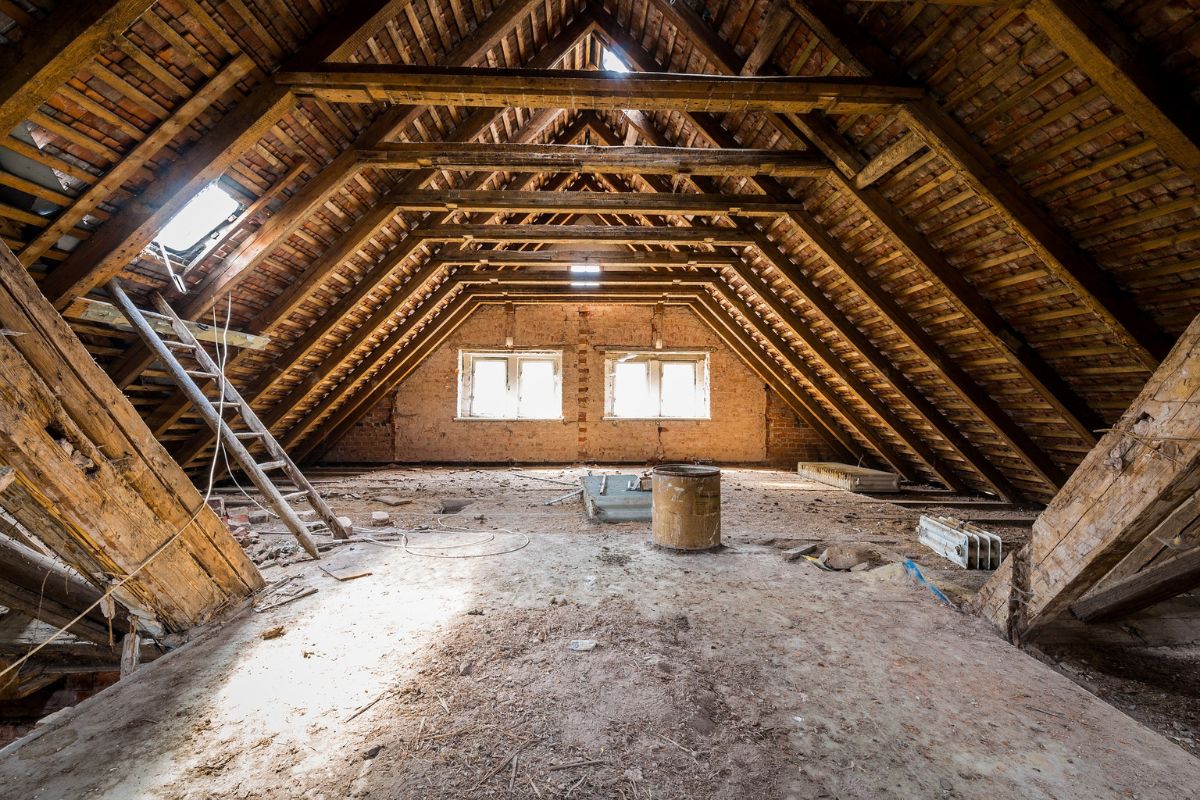
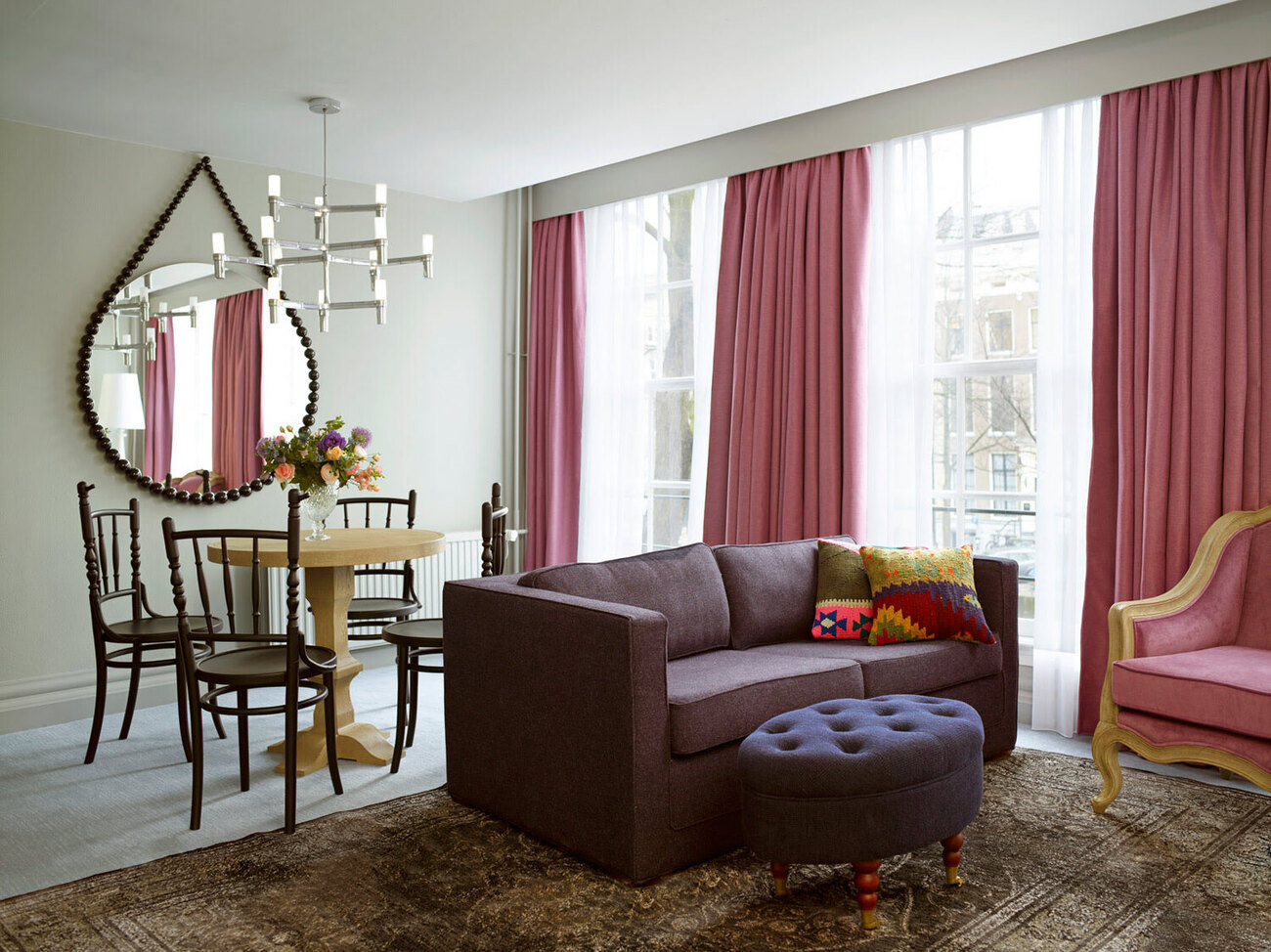
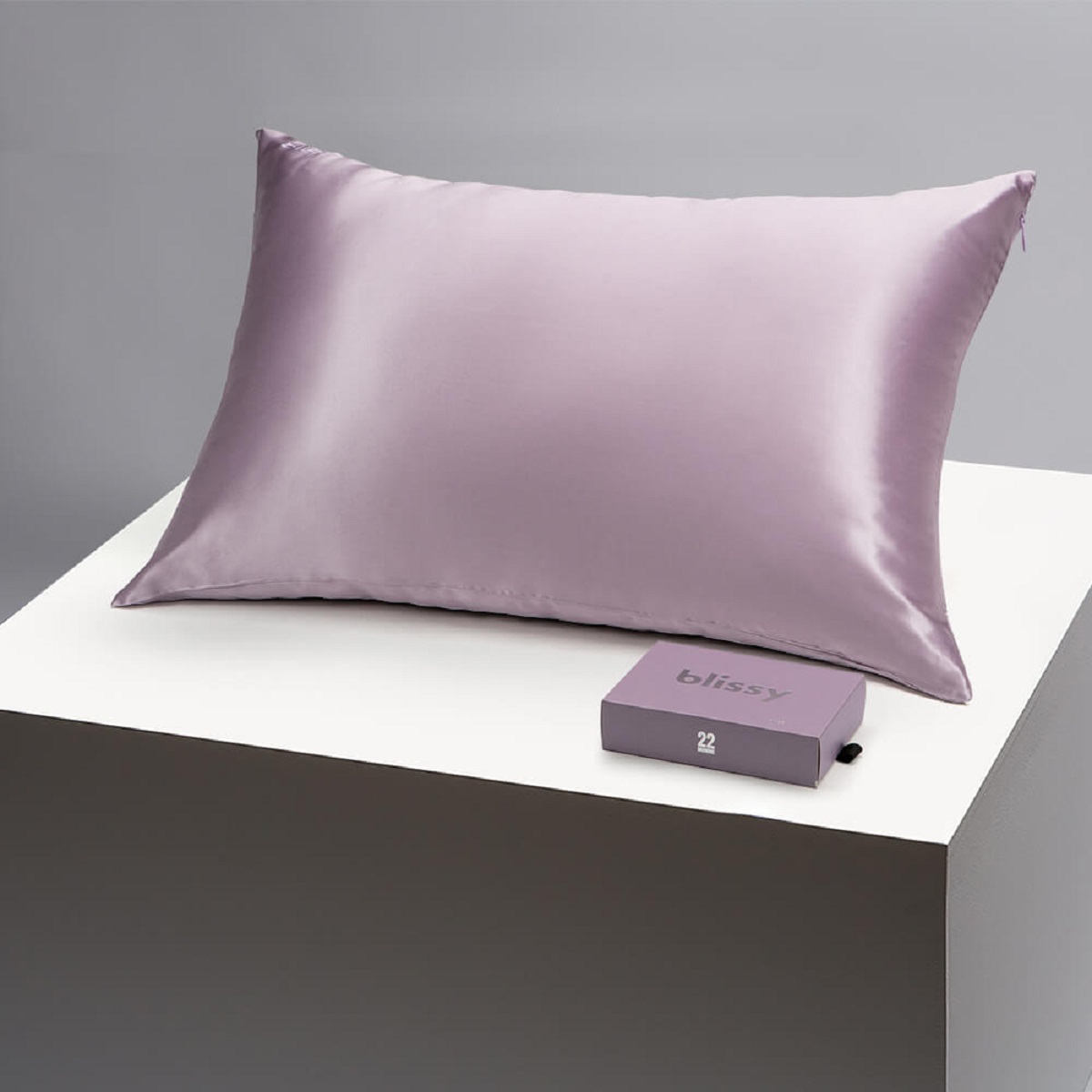
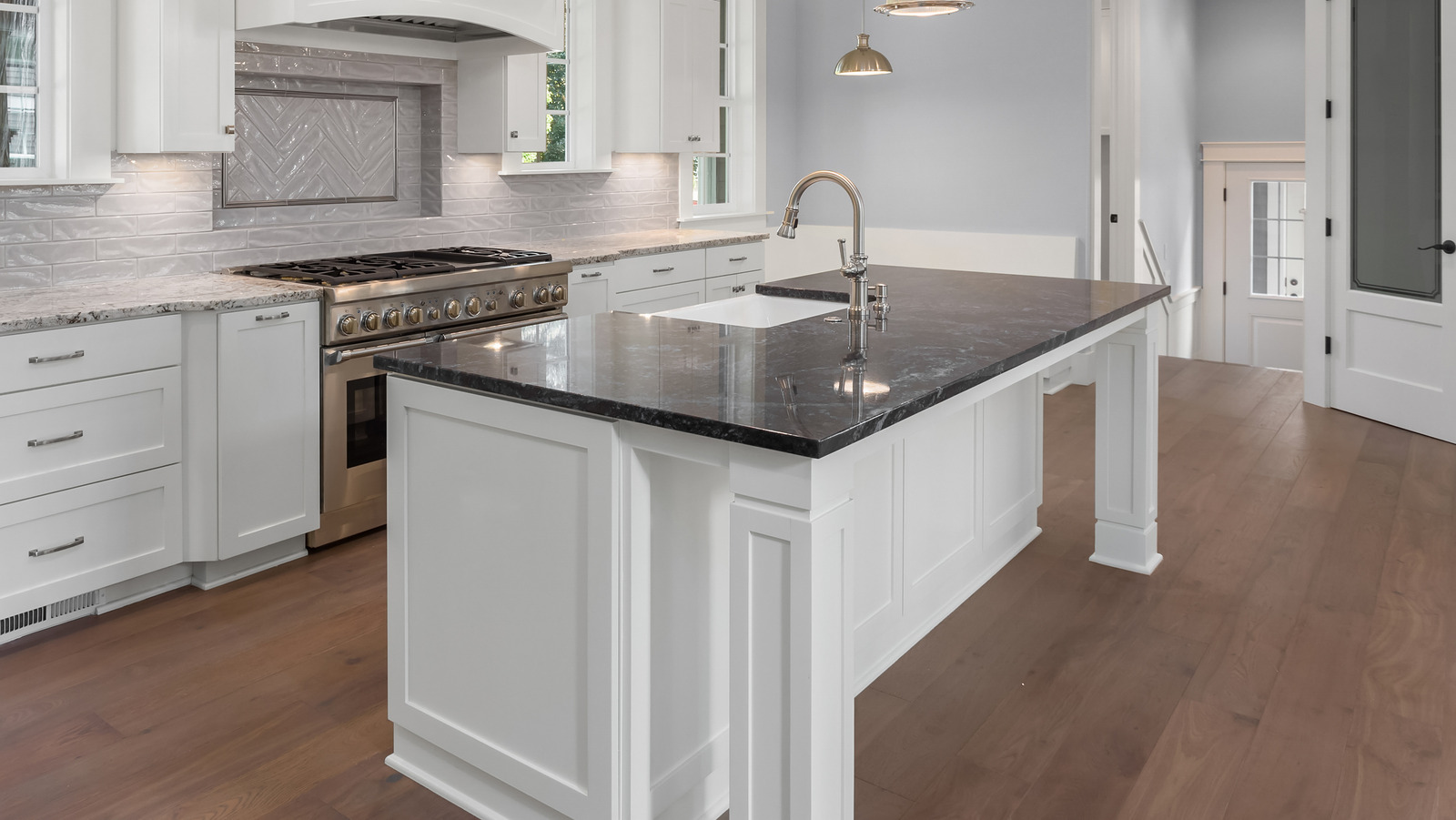
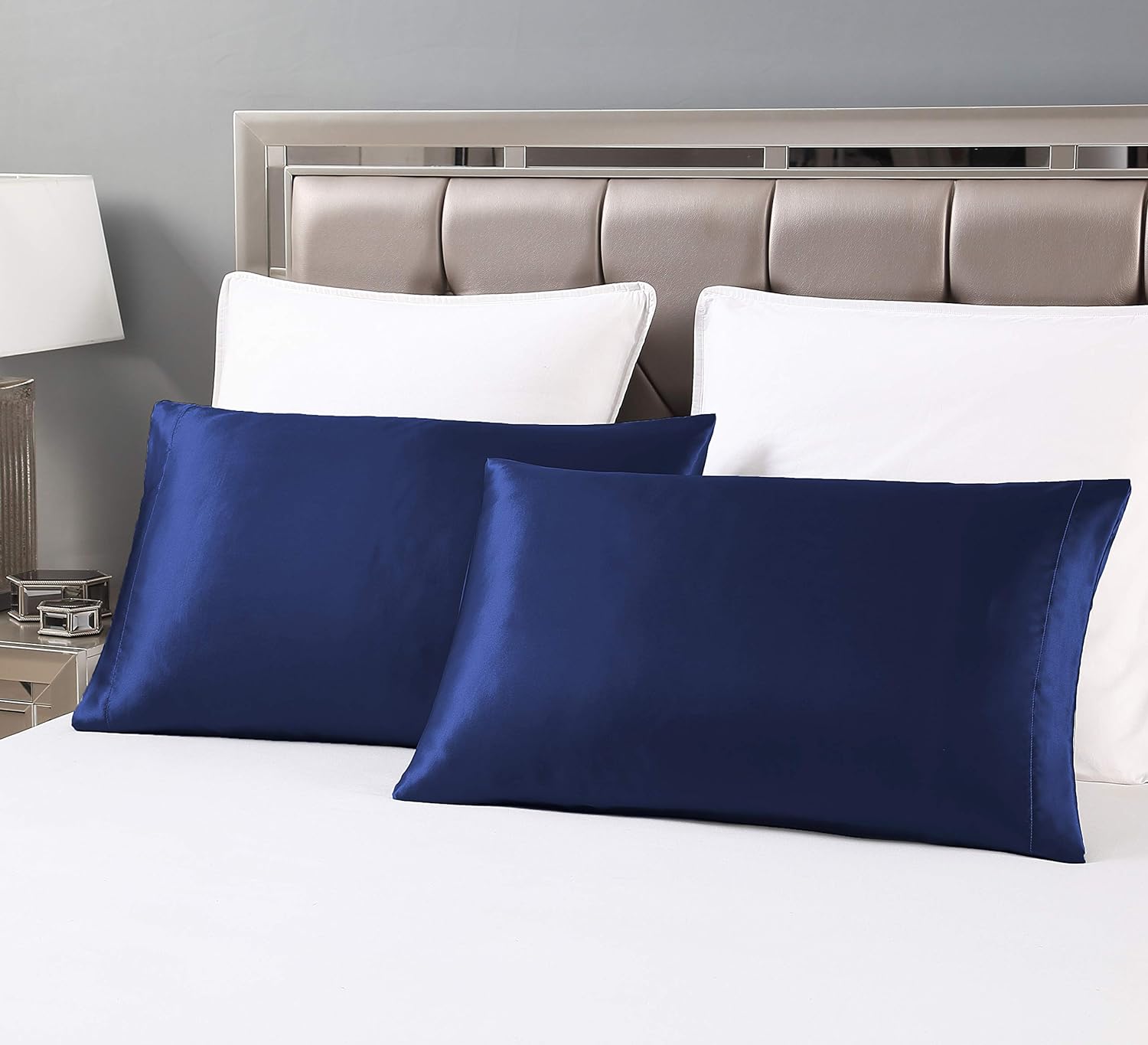

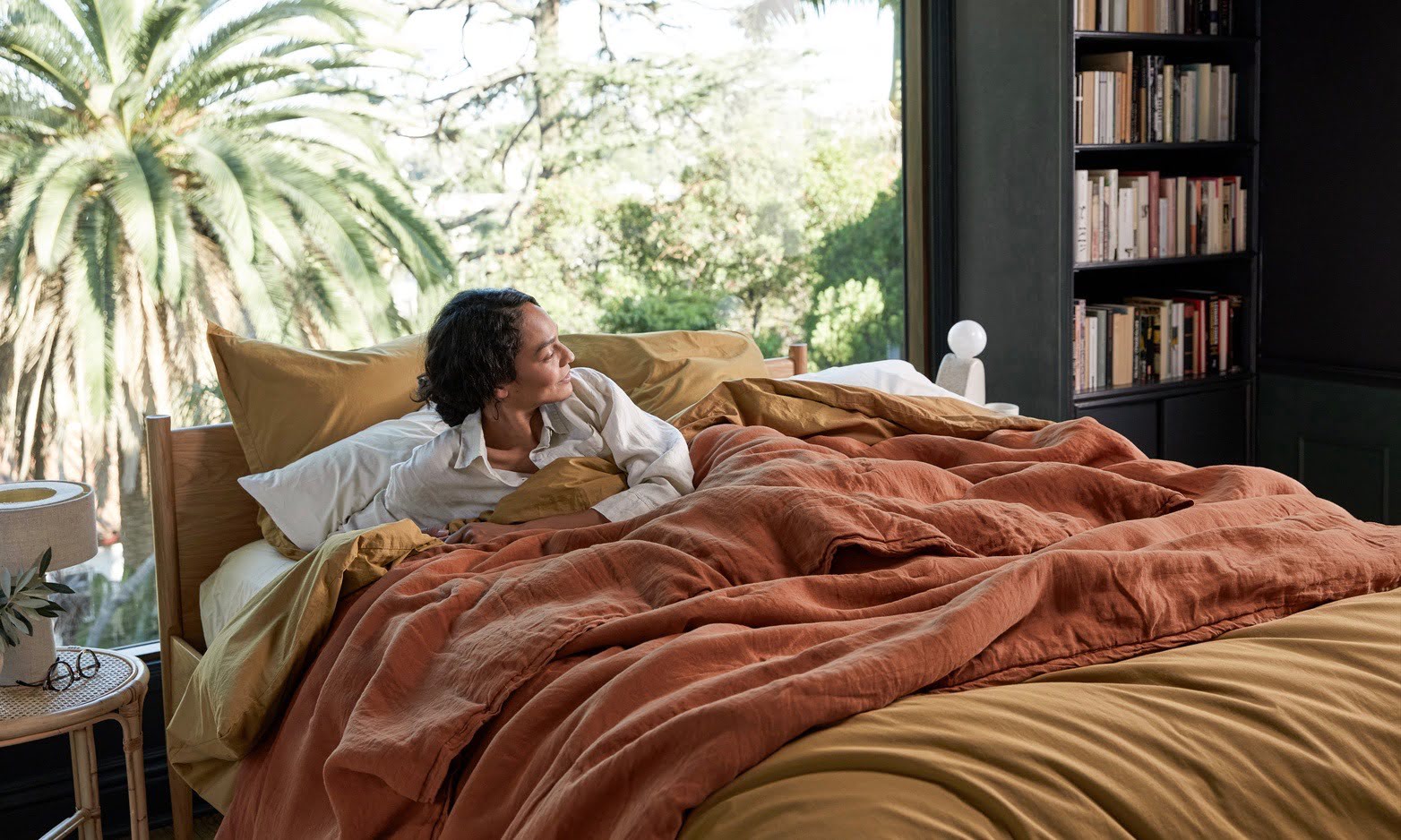
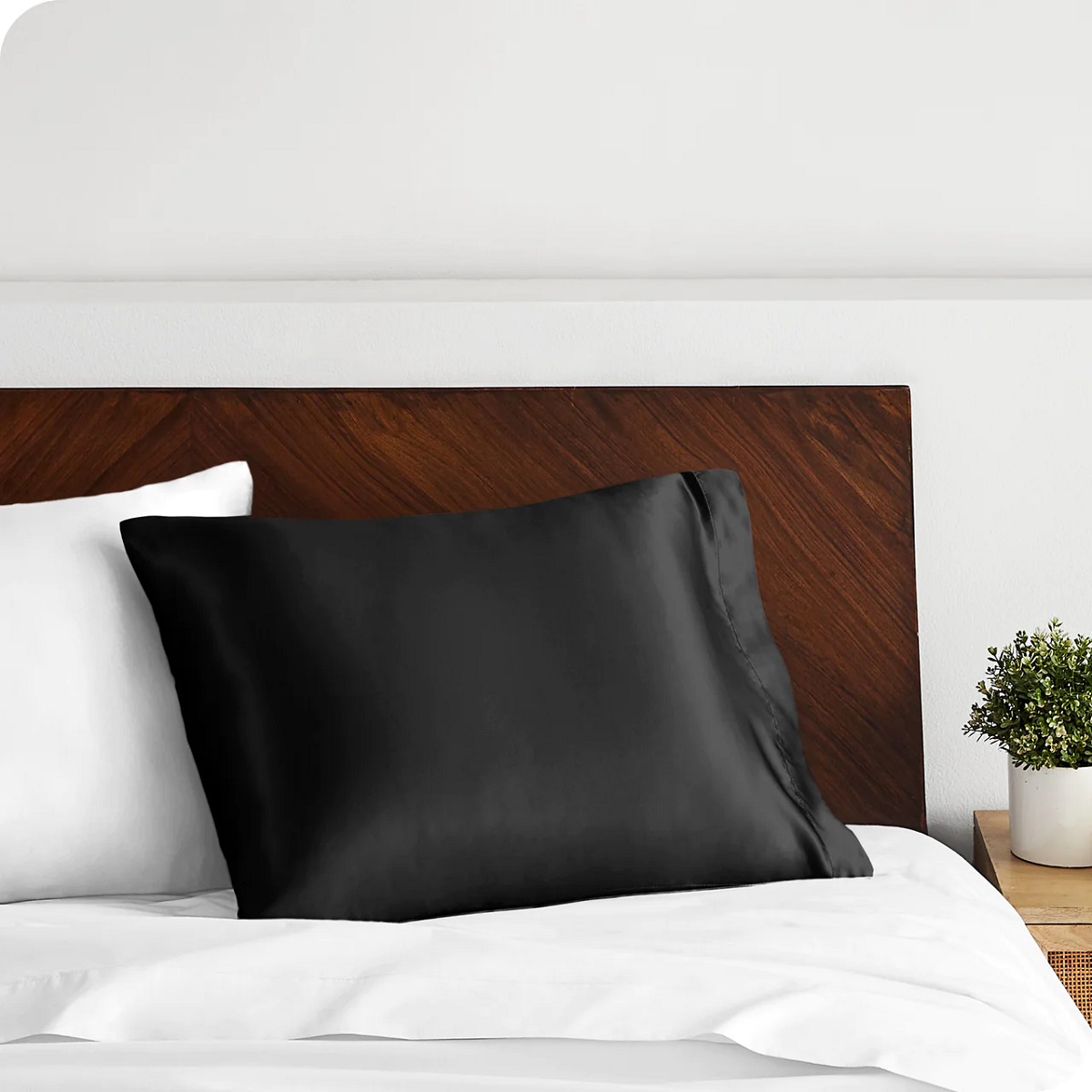

0 thoughts on “Which Type Of Pillowcase Is Best For Acne-prone Skin?”